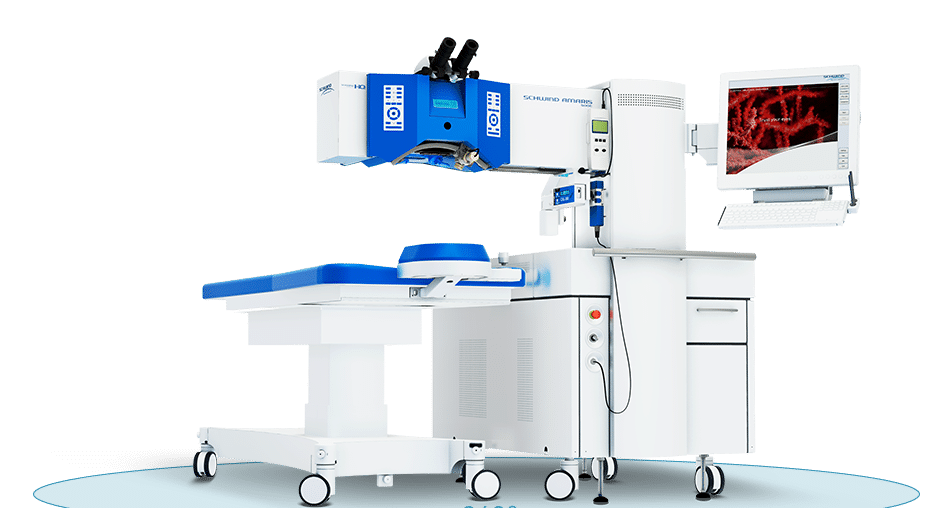Patients undergoing laser eye surgery have long been advised that it’s essential to keep your eyes fixed in one place during the operation to avoid damage to your eye. This can be a real source of anxiety if you think your eyes might wander during surgery. However, there’s good news – we may finally have the technology to avoid this problem altogether, writes Dr CT Pillai, consultant refractive surgeon and director of Precision Vision London.
Our clinic uses eye-tracking technology – how does it work?
During the pre-operative consultation, a thorough examination includes the capture of a detailed iris scan for each eye, a process akin to obtaining fingerprints, resulting in the generation of a unique digital identification. This iris scan serves as the bedrock upon which the state-of-the-art multi-dimensional eye tracker system of the SCHWIND AMARIS 1050RS operates.

Throughout the surgical procedure, this pioneering 7D eye tracker orchestrates the process, showcasing unparalleled advancements in speed, precision, and safety, thus setting a new standard in the realm of laser eye surgery.
Why do you use this technology?
Primarily it is for the safety of the patient, as this equipment is in direct communication with the treating laser, making any necessary adjustments needed if the patient moves. If there is rapid or extreme movement the equipment will instruct the laser to turn off.

Secondly, the technology guarantees that the personalised treatment plan is executed with complete precision. Despite not being used to correct the patient’s prescription, this is a vital piece of technology that is necessary to achieve outstanding results.
What procedures is it used for?
The SCHWIND AMARIS 1050RS is harnessed for performing both LASIK and LASEK procedures, two widely practised types of laser eye surgery. Prior to commencing treatment, the system meticulously identifies the distinctive digital ID of the specific eye undergoing surgery.
This meticulous process guarantees that treatment profiles are impeccably aligned with the correct patient and eye, thereby mitigating any apprehensions related to the inadvertent treatment of the wrong eye—a common concern among individuals undergoing laser eye surgery.
How widely available is the technology?
Unlike some other laser systems, the SCHWIND AMARIS 1050RS boasts cutting-edge iris recognition technology, a feature exemplified in its precise treatment delivery. This technology ensures the accurate alignment of personalised laser treatments by compensating for eye movement and pupil adjustments. With an impressive response time of just 2ms, the SCHWIND’s eye tracker guarantees that no laser pulses are ever misplaced, effortlessly tracking even the most sudden or subtle eye movements throughout the procedure.
When contemplating where to undergo laser eye surgery, it’s imperative to not only consider the expertise of the surgeon but also whether the facility has invested in the latest technological advancements, such as those offered by the SCHWIND AMARIS 1050RS, to ensure the highest standard of care possible.
Authors & Reviewer
-
 Olivia: Author
Olivia: AuthorHi, I'm Olivia, a passionate writer specialising in eye care, vision health, and the latest advancements in optometry. I strive to craft informative and engaging articles that help readers make informed decisions about their eye health. With a keen eye for detail and a commitment to delivering accurate, research-backed content, I aim to educate and inspire through every piece I write.
-
 Dr. CT Pillai: Reviewer
Dr. CT Pillai: ReviewerDr. CT Pillai is a globally recognised ophthalmologist with over 30 years of experience, specialising in refractive surgery and general ophthalmology. Renowned for performing over 50,000 successful laser procedures.

